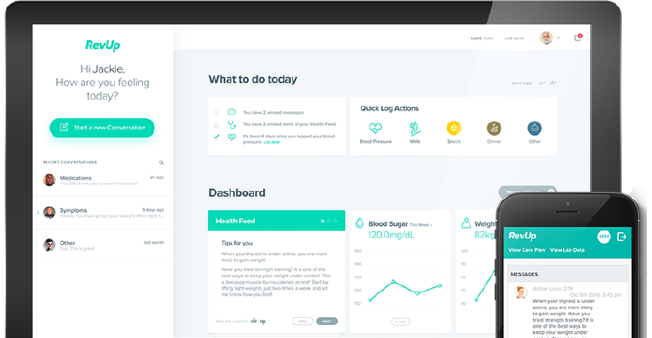Leading Remote Patient Monitoring Software: Improve Health Care Performance
Leading Remote Patient Monitoring Software: Improve Health Care Performance
Blog Article
The Future of Medical Care: Remote Client Keeping Track Of Simplified
As healthcare continues to evolve, one location that holds immense assurance is remote person monitoring. The idea of streamlining this process with technological advancements is improving the means treatment is delivered and obtained. With a concentrate on improving patient end results and streamlining health care shipment, remote tracking is poised to transform the market. By checking out the advantages, technological developments, and future patterns in this field, we can gain valuable insights right into the transformative possibility of remote individual monitoring.
Benefits of Remote Patient Monitoring
Remote patient tracking presents a wide range of benefits for both health care carriers and patients alike. One significant benefit is the capacity to continuously check clients' vital indications and health information remotely. This real-time surveillance makes it possible for medical care service providers to find any type of concerning adjustments or trends without delay, resulting in very early treatments and possibly stopping clinical emergencies. Furthermore, remote patient surveillance improves the overall high quality of treatment by giving an extra detailed and all natural sight of patients' health and wellness status beyond traditional in-person gos to.
Furthermore, remote individual surveillance can lead to enhanced person results and complete satisfaction. Remote surveillance can lower the demand for frequent health center brows through, decreasing medical care expenses for both carriers and people.
Innovation Driving Remote Surveillance
In the world of modern medical care, technological advancements play a critical role in driving the development and performance of remote patient surveillance. The combination of cutting-edge technologies such as wearable devices, mobile applications, and cloud-based platforms has changed the method doctor remotely take care of and keep an eye on patient wellness - remote patient monitoring software. These technologies enable continuous real-time surveillance of crucial signs, drug adherence, and various other vital health information, permitting timely interventions and personalized care strategies
One secret innovation driving remote monitoring is the Net of Things (IoT), which allows smooth connectivity between medical gadgets and healthcare systems. IoT gadgets such as smartwatches and wireless sensors transmit and accumulate individual data to centralized systems, promoting remote monitoring from anywhere in the globe. Artificial knowledge (AI) and device discovering formulas additionally improve remote tracking by examining vast quantities of patient data to detect patterns, predict health trends, and alert medical care companies to prospective concerns.
Impact on Health Care Delivery
With the combination of sophisticated innovations driving remote client surveillance, the influence on healthcare distribution is becoming progressively profound and transformative. Remote individual tracking allows health care carriers to supply more proactive and tailored like patients, causing enhanced health and wellness outcomes and decreased medical facility admissions. By remotely tracking essential indicators, symptoms, and medicine adherence, healthcare professionals can interfere early, stopping issues and boosting the general high quality of care.
Additionally, remote surveillance enhances access to healthcare services, particularly for individuals in underserved or rural locations. People can obtain constant surveillance and support from their homes, eliminating the demand for regular in-person brows through. This not just saves time and lowers prices for both individuals and healthcare facilities however also lessens the threat of exposure to transmittable conditions, an important consideration in the existing health care landscape.
Furthermore, remote person monitoring makes it possible for healthcare providers to much better allot resources and focus on treatment based upon real-time data. By recognizing risky patients and interfering promptly, health care shipment ends up being more reliable and efficient, ultimately bring about a much more sustainable and patient-centered medical care system.
Improving Client End Results

Moreover, RPM permits for positive administration of chronic conditions, lowering the probability of intense worsenings and healthcare click now facility readmissions. Individuals gain from increased benefit and comfort, as they can get care in their own homes while remaining connected to their doctor. This constant surveillance not only enhances client satisfaction yet likewise cultivates a feeling of empowerment and engagement in their very own health and wellness monitoring.
Future Trends in Remote Tracking
Welcoming innovative technologies in remote person monitoring is forming the future landscape of healthcare shipment. One substantial pattern is the boosted use of wearable devices and sensors to accumulate real-time information, making it possible for health care suppliers to keep an eye on individuals constantly without the need for frequent in-person brows through.

Additionally, telehealth platforms are ending up being a lot more innovative, permitting for digital appointments, remote diagnosis, and remote client monitoring done in one incorporated system (software for remote patient monitoring). This holistic technique to remote monitoring is simplifying healthcare shipment, enhancing person contentment, and ultimately, improving overall top quality of treatment
Final Thought
Finally, remote person monitoring offers numerous advantages in healthcare delivery, driven by developments in innovation. It has the prospective to enhance client results and helpful site transform the method healthcare is delivered. Future trends in remote monitoring will certainly proceed to form the landscape of health care, offering chances for more reliable and personalized patient treatment.
Remote person tracking provides a wide range of benefits for both medical care providers and people alike. In addition, remote person tracking enhances the total top quality of care by providing a more extensive and all natural sight of individuals' health and wellness status past conventional in-person gos to.
Moreover, remote person tracking can lead to improved individual outcomes and contentment. Remote patient surveillance enables healthcare carriers to offer even more customized and aggressive care to people, leading to improved wellness outcomes and lowered Learn More medical facility admissions. Remote person tracking (RPM) plays a substantial role in enhancing patient results by giving continuous, real-time data that makes it possible for healthcare suppliers to interfere immediately and change therapy strategies as needed.
Report this page